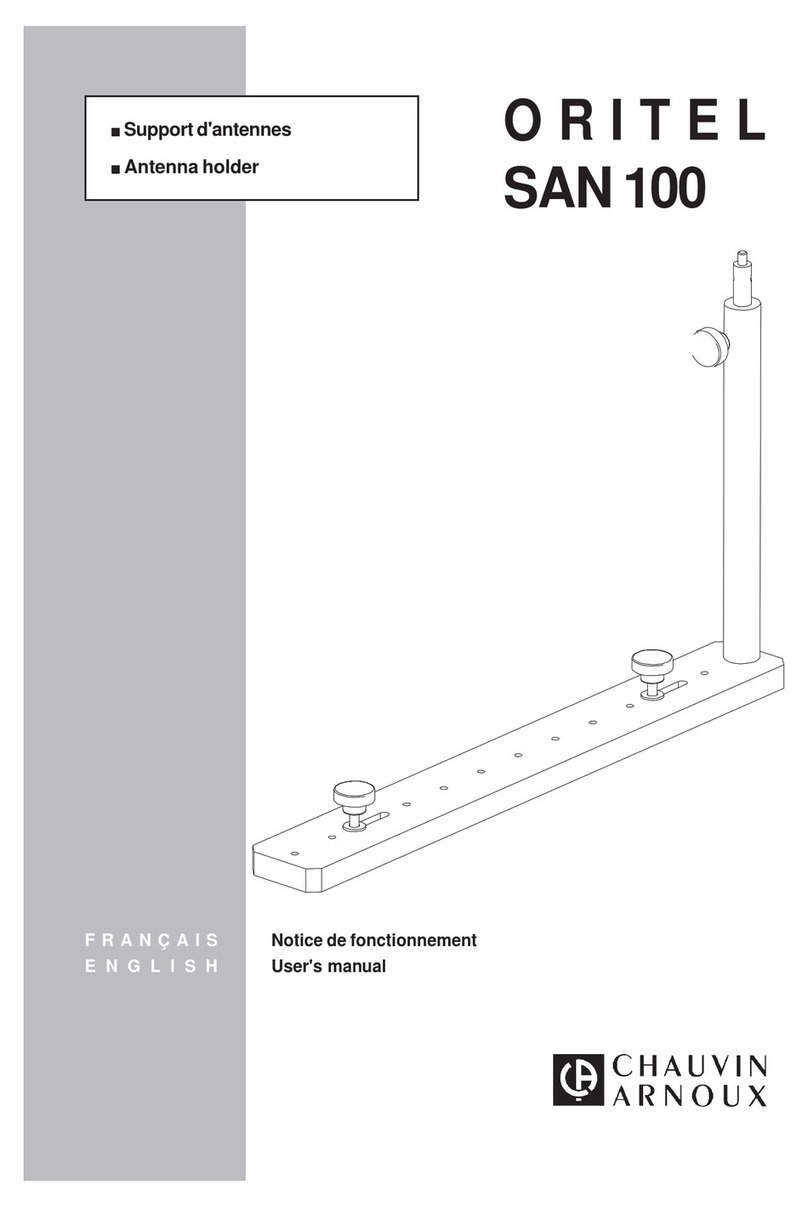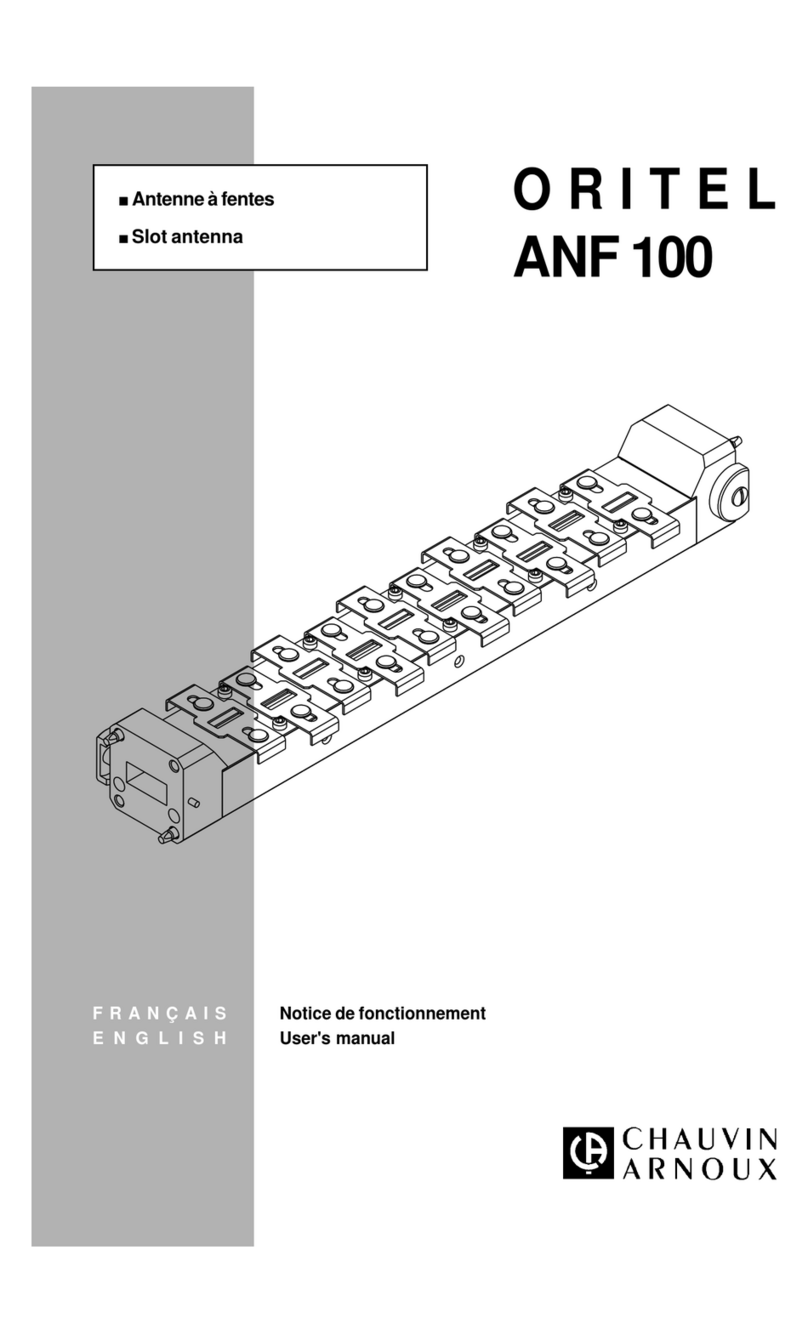
2
Signification du symbole
Attention ! Consulter la notice de fonctionnement avant d’utiliser l’appareil.
Dans la présente notice de fonctionnement, les instructions précédées de ce symbole, si elles ne
sont pas bien respectées ou réalisées, peuvent occasionner un accident corporel ou endommager
l’appareil et les installations.
Vous venez d’acquérir une antenne cornet 15 dB ORITEL ANC 100/15 et nous vous remercions de
votre confiance.
Pour obtenir le meilleur service de votre appareil :
nlisez attentivement cette notice de fonctionnement,
nrespectez les précautions d’emploi.
PRECAUTIONS D’EMPLOI
nLes mesures décrites dans cette notice de fonctionnement nécessitant une grande précision, le
banc de mesure doit-être monté sur un support très stable.
nTous les appareils raccordés au banc et connectés au réseau alternatif doivent être reliés à la terre.
nAucune tension de plus de 30 V par rapport à la terre ne doit être présente sur le banc.
POUR COMMANDER
Antenne cornet 15 dB ORITEL ANC 100/15.................................................................... P01.2753.04
Livrée avec cette notice de fonctionnement
Accessoires
Adaptateur de fixation rapide EASYFIX ORITEL AFR 100 ................................................. P01.2753.01
SOMMAIRE
1. PRESENTATION ................................................................................................................................. 3
2. DESCRIPTION .................................................................................................................................... 3
3. UTILISATION ...................................................................................................................................... 3
3.1 Rappel des constituants du banc didactique de base ORITEL BDH-R100 ............................. 3
3.2 Utilisation de la fixation rapide EASYFIX.................................................................................. 4
3.3 Gain d'un cornet et atténuation d'espace ................................................................................. 4
3.4 Diagramme de rayonnement d'un cornet .................................................................................. 7
3.5 Polarisation d'un cornet ............................................................................................................. 8
4. CARACTERISTIQUES........................................................................................................................ 9
5. MAINTENANCE .................................................................................................................................. 9
5.1 Nettoyage .................................................................................................................................. 9
5.2 Vérification métrologique........................................................................................................... 9
6. GARANTIE ........................................................................................................................................ 10
7. ANNEXE ............................................................................................................................................ 43
7.1 Vue d'ensemble ....................................................................................................................... 43
7.2 Adaptateur de fixation rapide EASYFIX AFR 100 .................................................................. 43





























